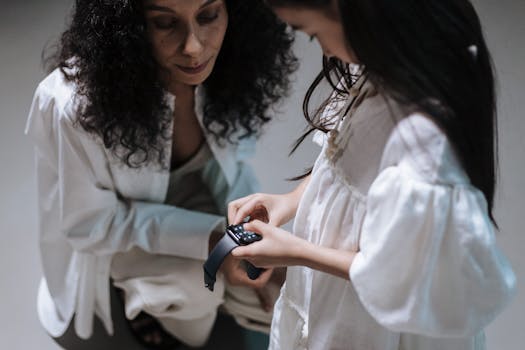
“
From Smartwatches to Smart Jewelry: The Evolution of Wearables by 2026
From Smartwatches to Smart Jewelry: The Evolution of Wearables by 2026. The world of wearables has undergone significant transformations over the years, and it’s expected to continue growing by 2026. The focus keyword From Smartwatches to Smart Jewelry has become a vital part of our daily lives, and it’s interesting to see how it has evolved from basic smartwatches to more sophisticated smart jewelry.
Introduction to Wearables

The term wearables refers to electronic devices that can be worn on the body, either as an accessory or as a part of the clothing. These devices are designed to track various aspects of a person’s life, such as fitness, health, and daily activities. Wearables have become increasingly popular over the years, and their evolution has been rapid. For insights into upcoming trends, check out Augmented Reality Glasses: The Must-Have Wearable of 2026.
Smartwatches: The Beginning of Wearables

Smartwatches were one of the first types of wearables to be introduced in the market. These devices were designed to perform basic functions such as telling time, tracking fitness, and receiving notifications. However, as technology advanced, smartwatches became more sophisticated and began to offer additional features such as heart rate monitoring, GPS tracking, and mobile payments. If you’re interested in the latest innovations, read about Wearable Tech Innovations by 2025.
Evolution of Smart Jewelry

Smart jewelry is a type of wearable that has gained popularity in recent years. These devices are designed to be worn as a piece of jewelry, such as a necklace, ring, or earrings, and offer various features such as fitness tracking, notification alerts, and mobile payments. Smart jewelry has become a fashion statement, and many people wear it as a stylish accessory.
Future of Wearables

By 2026, the world of wearables is expected to undergo significant changes. New technologies such as augmented reality (AR) and artificial intelligence (AI) are expected to be integrated into wearables, making them more sophisticated and feature-rich. Additionally, the rise of 5G technology is expected to enable faster data transfer rates, making wearables more efficient and responsive.
Conclusion

In conclusion, the evolution of wearables has come a long way, from smartwatches to smart jewelry. As technology continues to advance, we can expect to see more innovative and feature-rich wearables in the future. Whether you’re a fitness enthusiast, a fashionista, or simply someone who wants to stay connected, there’s a wearable device out there for you.
What to Expect by 2026

- More sophisticated smartwatches with advanced features such as built-in GPS, heart rate monitoring, and mobile payments.
- Increased adoption of smart jewelry, with more fashionable and feature-rich designs.
- Integration of AR and AI technologies into wearables, enabling more personalized and interactive experiences.
- Faster data transfer rates with the rise of 5G technology, making wearables more efficient and responsive.
Benefits of Wearables

- Improved fitness and health tracking, enabling users to monitor their progress and set goals.
- Enhanced convenience, with features such as mobile payments, notification alerts, and music control.
- Increased safety, with features such as emergency response systems and location tracking.
- Personalized experiences, with AI-powered wearables that can learn and adapt to user behavior.
Challenges Facing the Wearables Industry

- Competition from traditional watches and jewelry, which may be perceived as more stylish or luxurious.
- Concerns over data privacy and security, as wearables collect sensitive user data.
- Limited battery life, which can be a major inconvenience for users.
- High cost, which can make wearables inaccessible to some consumers.
Opportunities for Growth

- Expanding into new markets, such as the healthcare and fitness industries.
- Developing more affordable and accessible wearables, to reach a wider audience.
- Partnering with fashion brands, to create stylish and desirable wearables.
- Investing in research and development, to create more innovative and feature-rich wearables.
Conclusion

In conclusion, the wearables industry has come a long way, and it’s expected to continue growing by 2026. With new technologies and innovations on the horizon, we can expect to see more sophisticated and feature-rich wearables in the future. Whether you’re a consumer or a business, it’s an exciting time to be a part of the wearables industry.





4 thoughts on “From Smartwatches to Smart Jewelry: The Evolution of Wearables by 2026”
Comments are closed.